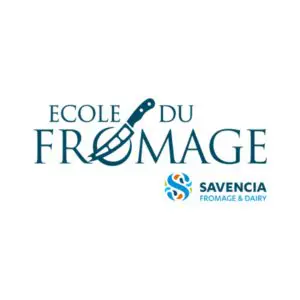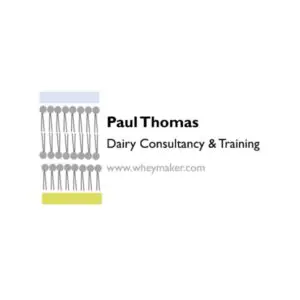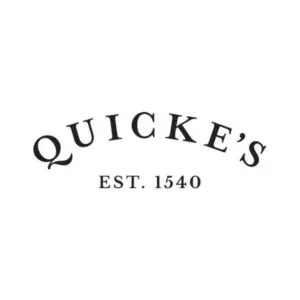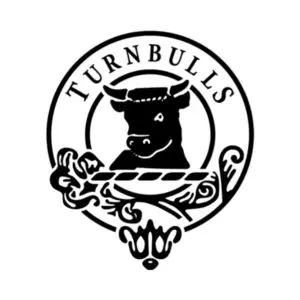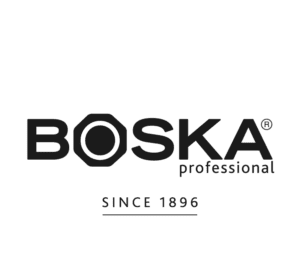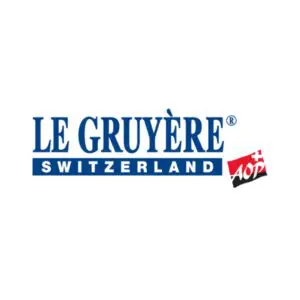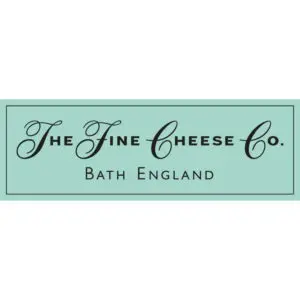#TNCN Tours des Fromages de France with Noemie Richard, we explore the cheese of Burgundy.
Streamed live on Dec 1, 2020
GUIDE TO TASTING CHEESE
Learn about the four stages of tasting cheese and how to take tasting notes with this definitive guide to tasting cheese.
French Cheese Episode Video Transcript
Right good evening cheese lovers, it is Tuesday it is Cheese Night. We are here let’s get the screen out of the way and welcome Noemi Richard. How are you Neomi?
Very good, very good. Hi everyone um thanks uh for welcoming another french cheese tour wonderful to have you back great i am uh the pleasure is mine how are you doing charlie i’m very well i’m very well i’m i’m in my spare room as normal it’s bleeding cold i’m gonna say the weather has definitely turned against me where is where are you you’re in france or in england no i’m in england i’m in london uh but yeah enjoying the heater yeah yeah i wish look so today we’re going to talk about burgundy burgundy is that sort of what do you prefer to say called the central rhone area yes it’s uh it’s the center east area of france it’s the very green area um i think uh we will uh we will see basically it’s green region with meadows and valleys surrounded by lofty hills there’s a big national park in the center of burgundy with incredible landscape forests abundance of water lakes um yeah and the the soil is granitic that which allow the creation of all these uh water sources so uh it’s it’s a great region for cheese but it’s also a wonderful area to visit and not that known we generally know lots gorman gomendi burgundy for its gastronomy but the uh the area is also a great one to to travel and hike for those who like it it’s i don’t know we can’t talk about burgundy with mention that it does have a couple of good vineyards it does it does i think it’s more than 80 different uh vineyard names and in a way pto of wine just in this region obviously there are main great varieties chardonnay pinot but just with these varieties we have yeah more than 80 different pdo chateau appellation um yeah it’s uh it’s it’s worth the the visit and uh it requires time and no yeah we were lucky enough my wife and i to drive back uh right up the road right down from from the mediterranean going up to north until we got champagne and then we cut across to calais and we were boring our brother-in-law’s um uh what it is called people carrier you know one of those big slidy doors and the back suspension just went with every vineyard we visited as we shoveled in more and more wine as we were heading north it is the most amazing amazing area but let’s let’s talk cheese um it doesn’t have a huge number of cheeses does it it you say it doesn’t it doesn’t it doesn’t no there aren’t there aren’t like dozens of cheese from that region so yeah it’s it’s not the biggest cheese area in france but because we mostly know the region for their pdos for their big denomination and the big regional names but it actually does have plenty of small farm name lots of history called cheese made in abbeys and still today uh the monks in certain areas of vulgar they still make cheese in their base but they’re very small productions they’re very um not really known name but we do we do find a lot um we see that many of the cheese are inspired from one of the uh most emblematic cheese of france the oppressed but we can also find some uh very unique varieties such as the vaseline which is a small bowl of soft ripened cheese we have also some cotton of goat cheese we find quite a lot of goats milk in burgundy so there is um small varieties not that known as its big ambassador which is the epois which we were showing this is the really big production and the very known and renowned out of burgundy uh burgundy region and it does actually originated for its specific technique and recipe it originated many derivatives and yeah that’s the whole point of of today to talk about this washed wine cheese family and to talk about uh how was it born and how the it was history was um yeah so last week we we we talked with rupert lyndon who’s a spanish cheese expert and we tasted the cabrales which is one of the biggest flavored cheeses in spain right it feels to me that if if although it’s completely different type of cheese if if there was a title for the biggest flavored cheese in france it poss might get it it is the big one isn’t it it’s got huge flavors when it’s happening yeah yeah to me to me it’s uh for many people it was is uh the one you put at the end of the tasting you know we’re gonna go we’re gonna go into the deep end but before we go before we go any further i heard now tell me if this is true if price is banned on french public transport for being too smelly is that true or is it one of those stories that just goes around the internet um so i think it’s a legend uh to be honest i have never formally formally checked to be honest however i think and uh that’s a that’s a good point to mention i think the legend is with the one which is another very flavoring if i tell you okay you can see that we’ve got allison watching us tonight amongst others allison i’m putting on you you need to google this for us is it price banned on french transport now while we’re doing that so so let’s let’s have a look at this little monster cheese uh very distinctive very distinctive i was just showing in there i’m keeping my fingers off it so so so just just give me the run down what sort of size can a cross be um and talk to me about the rind just get me going on so um so a plus um is uh we have two variety of vapors the one that you’re showing which is 250 gram a small format but you can also find a price in bigger format of 900 gram so kind of wheels uh to um to more for daily uh daily counter um and the price has this color as we said because of a specific technique which actually come from this area come from burgundy we have to think about when we talk about it was that its history started back in the 15th century it started during the monasteries like i would say 70 60 70 percent of the cheese in france actually started in monasteries where the hmong had access to education religious community uh built there are many recipes and we have to wait the 17th century for the uh production going away from uh like expanded from the monasteries to the farms and has been one of these big uh cheese at the time uh when we got to the 19th century it was more than 30 farms producing this dishes which was quite a lot at the time and the monk developed a recipe that was uh that was allowed allowing and in accordance to their rhythm of life so basically they had cycle of rhythm of life of eight hours for studying for uh for for training and for um for working so they set up the setup the um the the process depending on these cycles of a tower that’s why we find uh the coagulation of of the aqueous is very specific and it’s very long it’s 16 hours why because we have this um this this process and and today we find that these processes are fundamental to allah to allow a great ripening and a slow ripening of the of the curd but it came from the coincidence of the monk lifestyle and yeah and the the interesting story with the it was is that after the two war many farmers had to leave their farm and obviously during the war they they went to fight for the country and uh almost 90 percent of of the equest production literally disappeared after the war and and we have to wait the early 50 uh to see a gentleman back from war so berto and bento uh was uh coming back to to to to to the to the farm nostalgic of the epos flavors memories and she decided to produce baggages um and yes 1956 i said and so to produce the cheese he literally imitated his grandmother and auntie which was the only one still repeating the recipe which because they were in the farm during during the war and still repeating the the recipes and and this guy sir berto is actually it’s a legend for burgundy because he’s been the link between 500 years of tradition and our century and nowadays i mean since 1970 it’s been his son who uh learned with uh with with his father how to make the production and uh and which is john berto still uh still owner of the rebate and he decided to kind of highlight the the characteristic of the oppressed and participated in creating the the pdo he was part of the committee that created the pdo in 1991 and pdo definitely protecting what we know today as the puertos which is exclusive from this from this area but yeah so as you said it’s it’s really a unique product it’s got this kind of froggy uh froggy skin um so so let me just sum up what you just said so make sure that i’m keeping track because i’ve got to be honest i am just yes which is amazing one of the good advantages of having a cold bear room is that the temperature in here might be about 12 degrees which is what you want to mature this cheese and it’s been here since i don’t know one i don’t know it’s seven or eight about 10 o’clock this morning and it’s maturation the one i’ve got here is really looking good so i’m going to bring that up the camera can you see that team come on you can go so i’m getting a little bit of crumbly still in the middle it’s a tiny wee biscuit to be had but otherwise i’ve got maturation all the way through which is great um this rind now this is technically a washed rind cheese which means we’re harnessing the power of bacteria as our ripening culture that’s what we’re using to break the cheese curd down but that can’t just be bacteria that on that orange what else what is that there’s a mold there as well or a yeast is there yes it is it is so basically this cheese you have to understand that it’s a ufo cheese it’s anti-academic way of making cheese because basically when you do it really not it is it is um so basically when you do some tripod cheese what you want is to have the shorter maturation as possible because there’s there’s moisture in soft fragment sheets so it’s very complicated to make the maturation lasting when you have a lactic soft ripening and this is what’s done with this cheese we make five weeks of maturation which is very long and to create to to allow this cheese to live long life we will create a very soft maturation development so we will successfully develop first the yeast and the yeast will be step by step washed in the first two weeks of maturation and once the with the the the yeast developed over the rinds we will then develop the uh bacteria which is the brave bacterium linens that gives this orange color so it’s literally a step-by-step process of different microorganisms that will success themselves in the time and allow a soft and long-term maturation and evolution of the cheese that is a yeast rind ripened and then bacteria ripe and cheese so is it a yeast we know are we talking about um geotrichum or is it something else yeah this is a geotrichum this is a geotriker and when we say we when we say that we wash the the cheese basically every uh every week we will two twice we will take the cheese take a mix of water and geotrichum the yeast and we will wash the surface by hand it has to be made by hands we wash the surface of the cheese and that will clean the yeast that was previously on the rind and create a new yeast development so it allows a soft evolution of the cheese after two weeks we will go towards the brave bacterium washing so it’s now water and brevi bacterium plus a a small level of mardi gras brandy which is the element from the burgundy terroir as well which make this cheese very very special and very unique in its in its area and as we go washing till the last week to the fifth week for berto we will increase the concentration of the burgundy alcohol and again the fact that we put alcohol on the surface that we wash the cheese with alcohol has an importance in terms of um of the uh evaporation of the of the moisture and it will it will dry it will dry the the rind so it will dry the rhine to allow not to have a very sticky and wetty uh wet urine so the alcohol apart from giving the flavor will literally have a technical function and and obviously will help to protect the cheese so historically it was first used as a preservator of the cheese well i don’t know that it actually really works to get it non-sticky this is the stickiest cheese of all cheeses but great so i’ve just gotten in from allison she has and i’m gonna quote her here copied from google here is what it says the stench is so potent that french law has officially banned it from the parisian public transport system it is a legal offence to carry it on your person in paris on public transport now just in paris that’s paris everybody know that google never lies so obviously that is true thank you very much alison um so so let’s let’s one of the things i was told about um wash drying cheeses and it’s true of many wash dry cheeses is that one of the flavors that develops is um a meaty flavor sometimes an awful flavor sometimes it’s a broken note sometimes a ham note sometimes a beef no sometimes it’s that liveriness and that the monasteries that developed this one of the reasons that they developed they enjoyed this flavor is because they might be they were vegetarian in their eating and that they enjoyed that sort of fake meat um which gave the flavor is is there any truth in that or is that another one of those stories i think uh let’s let’s ask google because as far as i know burgundy is a very rich region in uh charles charles is one of the best meat uh type in france so i i’m not sure we can say that uh they didn’t uh it’s myth i think it was one of the main ingredients and i i think that’s likely to be true i i mean monasteries down or anything but they were they were good on that nowadays it’s a very good rationale to have for the cheese for uh vegetarian people because it’s definitely um have a very intense meaty note umami the the watching the rhyme really um highlights the umami umami note we also can find um some earthy character on the right because of the yeast uh work and some straw character slightly uh farmyard character what we don’t want to get too much is ammonia we need a little bit of ammonia it’s part of the characteristic of the of the rind but not too much if it’s too intensely ammonia it’s not the right effect you’re tasting so yes and obviously the creaminess but again we are tasting it at the very perfect moment if we were having this cheese at the beginning of its life we would definitely see the lactic hut uh dominantly on the on the center of the of the club now one of the cheeses that i um i don’t like quite as much as as it was is the liver oh um which is you know that normandy cheese very good cheese but i prefer the across as a really good expression of washed rind but on the liver oil you often get that crunch that granular texture in the rind which i’m told from the migration of the calcium to the edge and the crystallization you don’t get that in liver oil it does it seems to avoid that kind of granular sandy effect why why is that the sandy effect of the rind yeah that you get in a in a liver that kind of you know and it sort of yeah again uh again the library is soft ripened but um the texture is firm and um to to enter a bit into technology it’s enzymatic technology so we’re making the curve very quickly and the maturation process is quicker as well so we don’t have a soft development we don’t have this transition of the yeast and then the breathy bacterium leanness it’s it’s go quicker so um and and as you uh go on to the evolution of the of the rind the uh bravely bacterium naturally will get more sandy uh but this is because you have a quicker evolution um it’s hard to explain in in tuesday night uh youtube yeah this is not this is not a class it’s not a dairy technician i’m just gonna do a little bit of explanation though when you say enzymatic coagulation you’re talking about reddit so yeah the approach no rennet lactic only uh livero rennet the whole thing’s happening faster um and we’re going straight to wash dry and we’ve traded water we are not doing this um ends um this yeast based preparation on the way to washington exactly exactly okay the more you carry cheese in the maturation room the best the evolution of the cheese will be on on your shower for in your fridge basically and that’s the magic of of the oppressed should i talk to you about one little brother of us yeah yeah yeah this is this chap oh no which one are we doing here this is oh you wanna do that oh yeah yeah i was thinking this is uh so it’s definitely inspired from it for us um the cheese maker decided to create something um with another regional alcohol we all know the chevy with the chardonnay grape variety so instead of using the brownie margarine to wash the cheese we will use the chablis alcohol and this will have an impact um in the texture of the cheese like i opened that at the same time and this one is much more uh melting we have a much more creamy uh creamy paste and this is uh also because of the way the the the ingredients of uh of the of which we wash the rind the chablis has less alcohol less alcohol means less water evaporation and this will allow more creaminess into the into the paste and as we’re talking about alcohol if you want to if you don’t know what to care about any of these cheese please go for a chablis i’ve got here a chardonnay from burgundy similar to chablis style and this is just a incredible experience and if you go for a great red gray variety try any burgundy pinot noir it always works so yeah did you film in terms of texture i love the fact heading in with a spoon so what are we expecting and the differences here what differences between a shabby wash and a marketable grind wash what what do i taste as a difference so you will have more lactic notes on the chaby one it will be less less meaty uh a bit more towards the strokes towards um animal character uh and lactic character you you’ll have less um less of this criminal of this uh meaty umami flavor i would agree i am getting less of that in my view yeah i’m getting much i’m more creamy now galactic yeah so that’s obviously we didn’t talk about it but the shape is also different this is a smaller format 200 gram and we know that in cheese shape it’s not only yeah it makes it makes a big difference in the maturation the smaller the cheese the quicker um the evolution of the maturation will be so um so um yeah that’s the case for that let me um give another so obviously we talked about wine pairing chablis or uh or any uh chardonnay from burgundy work well another very nice alliance with the soft ripened cheese family ipois or afidelis is chocolate i know you’re familiar with it i got i got here uh black chocolate a caribbean black chocolate from verona and uh it’s got this uh roasted uh roasted uh flavor aroma and what it’s unexpected i mean that’s not fair you did not send me chocolate i feel i how can i participate in this that’s not i want chocolate charlie i’m just uh trying to put the basis for 2021 i’m just checking if it’s working so we can repeat that so let me show you very simple you take your spoon and and by the way this cheese you want a spoon to enjoy it so you will just use your chocolate square as as a cracker basically i minced here some gingerbread and i will just sprinkle gingerbread on top of it so really remove the camera i’m giving you some screen time here hang on a second let’s get me out the way uh right get closer i think you’re gonna have to come round your desk mate you’re gonna have to go right there you go so i’ve got my caribbean chocolate my creamy perfect ripened it was with some gingerbread mint sprinkles bring that on loving it okay so that is that is your christmas tree tuesday night is cheese night uh so what percentage chocolate was that what percentage dark 66 person 66. so bulldog just just heading up there um uh and uh 66 percent so and you went yeah you’re right didn’t you you went you only went with the athletes on that yeah i i did it with edwards i did it without i prefer it with the poise because the chocolate is very strong so i needed meaty character of the cheese i’m going to do that all right i’m going to do that now that shape matters and one of the things you sent me was this little chappie which is what i don’t know what that is 90 grams or something 60 60 grand 50 grams okay he’s time he’s tiny whoa look at him yeah this is a this is again this is a treasure in terms of process and then making because imagine ripening a soft lactic cheese is very complicated if we wash it but imagine if if the cheese is now 60 gram yeah it’s uh it’s uh as we say in french which is a big challenge and uh yeah so it’s basically in terms of taste and flavor we should find a very similar character to uh to a plus maybe a bit firmer um as well this one is is a bit younger at least the one i received um but yes it’s basically having the taste of epwas in a concentrated uh concentrated format um of um 60 61. so you’re telling me what i’m hearing that right is in making these small chaps they have to pay more attention to making sure it retains its structural integrity so it’s a bit more a bit more rigid than your than an impression yeah they need to they need to make it more rigid they need to um yeah i i know a lot of people who think they either think they don’t like ibra or um they do but people in the house don’t so i think this is the christmas gift the little 60 grams of earplus taste bomb that goes into your christmas stocking that’s what that’s about yeah it comes in that little chappie there it’s a little box there which is nice which is the name of the as we said of the family who literally saved the uh the epoch and made the epusa what it is nowadays and uh as as the flavor all developing in in my room i can taste more and more of the um the farmyard and the really the the cow shed i don’t know about you but i’m really uh traveling more and more right well on that note now um thank you for introducing us to so much about the oppressed but cheese so many people know about so many people know so little about um also thank you for getting this cheese to me in such good nick when i used to sell this in my shop this is the shortest peak of all the cheeses so obviously cheddars you’ve got weeks to sell them they’re going to taste good right through you know then it comes down to a brie when you’ve probably got a week when it’s in good nick and the flavor is going to be strong through the week but a price you probably have 48 hours when we used to do our cutting 800 gram breeds when it’s good it’s going to go out the door got to go out the door um and this is the cheese that just when it’s eat it eat it it’s amazing it’s amazing and this has just been so enjoyable for me i have eaten half my ipods my wife and i’ve eaten uh a quarter of my oh cafe de lis and i’ve eaten half my taste bomb here so thorough going over i’ve given my cheese board um thank you so much thank you so much um we’ll come back in the new year we’ll be back in the new year where do you want to go now you’ve you’ve taken us to i mean is that about time quickest to normandy yeah i think we want to go to normandy we’ve uh kind of uh said too much already to not go there so maybe it’s the next uh the next the next step yeah next stop on the tour from ours we know me richard of cevencia mitra from azure thank you so much thank you so much right team thank you so much for tuning in that was burgundy a plus and that is a cheese that is cheese that is no shrinking violet i absolutely love the applause as i said get it right knock the socks off so many other cheeses right uh what i’m going to say is next week we have joe schneider coming up to talk about stitcherton the rebel the rebel stilton i’m not even going to say that because it’s against the rules the rebel stilton is coming here uh joe is going to tell us all about what it’s like to make a stilton style cheese with raw milk when using all those excellent bacteria to bump the flavor right um after that we have the tuesday night cheese night academy cheese christmas party i’m not exactly sure what we’re going to do with that we haven’t thought it all up yet but we do have a cheese box that you can order from the fine cheese company so we’re all tasting the same thing and get ourselves a glass of wine and celebrate i’m not quite sure what there is to celebrate about 2020 maybe it’s the very fact that’s coming to an end and bleeding nora we’re gonna get a little drunk as we head into new year even if it’s on our own sometimes that’s the right thing to do but 2021 is coming after that we’ll take a break back in the new year so see you next week for tuesday night is cheese night we will be talking joe schneider we will be talking uh stitch your turn see you then





